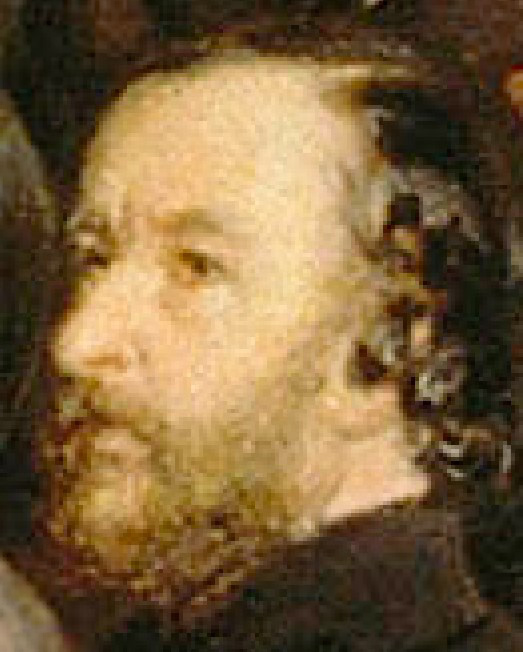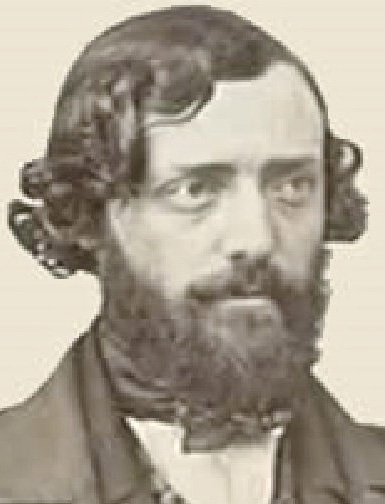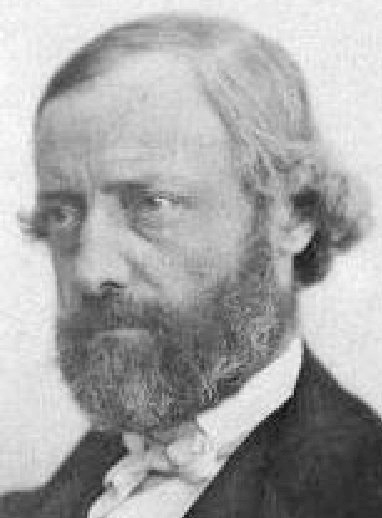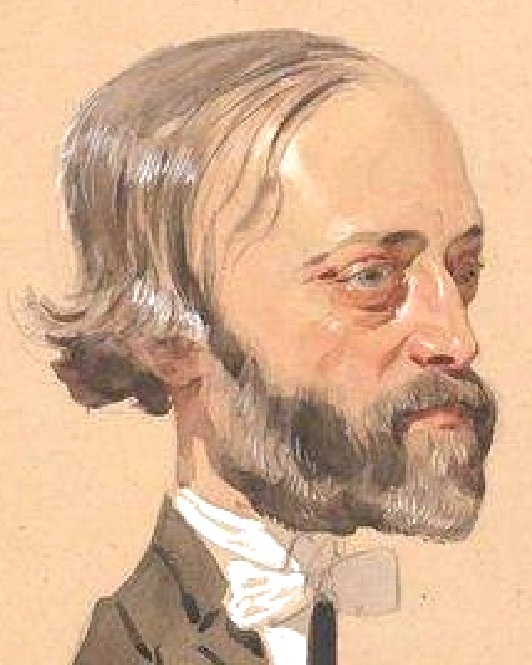Eugène Emmanuel Viollet-le-Duc (1814-1879), architect
1st image: Soirée; 2nd: early daguerreotype (1844); 3rd: photo by Marville (1860); 4th: caricature by Eugène Giraud drawn Friday April 12, 1861 at de Nieuwerkerke's soirée. (Alternative: Troyon)
Architect Eugène Viollet-le-Duc is the person who caused me to start this research project in 2015 when I found an image of Soirée au Louvre at an exhibition in Paris dedicated to this famous architect. An article in the Gazette du Midi from 1855, uncovered in April 2024, suggests this is not Viollet-le-Duc, but his friend, peinter Troyon: In my opinion, they both belong here.
For sure, Viollet-le-Duc has visited de Nieuwerkerke's16 vendredi-soirées several times, starting with December 19, 1851. He also was a much-welcomed visitor of Princess Mathilde’s Salon.
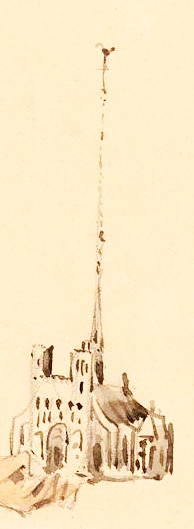
The interesting aspect of Viollet-le-Duc restorations was that he returned buildings into a state which never existed. Many historic buildings were built in phases, often spanning hundreds of years. Changing architectural insights resulted in new, contemporary, additions rather than the initially planned ones. Viollet-le-Duc restored such buildings, e.g. the fortified city of Carcassonne, to the style that he considered original.
His knowledge of medieval construction and design was immense and unique. Some of his contemporaries ridiculed him, but the emperor loved it and kept on commissioning the manic worker Viollet-le-Duc with new projects, often in cooperation with inspector Mérimée54.
An example that recently received attention was his reconstruction of the Notre Dame, awarded to him in 1844, lasting 20 years.
He created a new ornamental spire, substantially larger than the original, and added a statue of Apostle St. Thomas (patron saint of architects) that had a striking resemblance with the young architect.
It was this spire (flêche) that burnt in the fire of 2019 and, even though it never existed before Viollet-le-Duc’s restoration, it has been restored to its original (1860) form. Already in his 1861 caricature, Eugène Giraud11 mocked Viollet's new immense spire.
The emperor nominated Viollet as inspector general of religious buildings in 1853.
In 1854, he published his ten-volume masterwork entitled Dictionnaire raisonné de l'architecture française du XIe au XVI siècle. The emperor’s admiration for this architect was so great that he asked him in 1856 to design a royal railway carriage in Gothic style. The kindhearted Viollet called the emperor his ‘patron’ or even ‘papa’ and often returned criticism with friendly and helpful comments.
It is lesser known that Viollet was the chief engineer for the Statue of Liberty. He designed the internal structure for his bright student and friend Auguste Bertholdi (also Ary Scheffer's41a student) and helped him design the torch. The hammered copper plates on the outside of its stucture that give the stature its imposing appearance were also Viollet's idea. Upon Viollet’s early death, Bartholdi turned to Gustave Eiffel to complete the structure.
Viollet-le-Duc passed away in 1879, while working on the reconstruction of the spire of the Cathedrale de Lausanne, which had been burned in 1825. Better to be careful with spires.